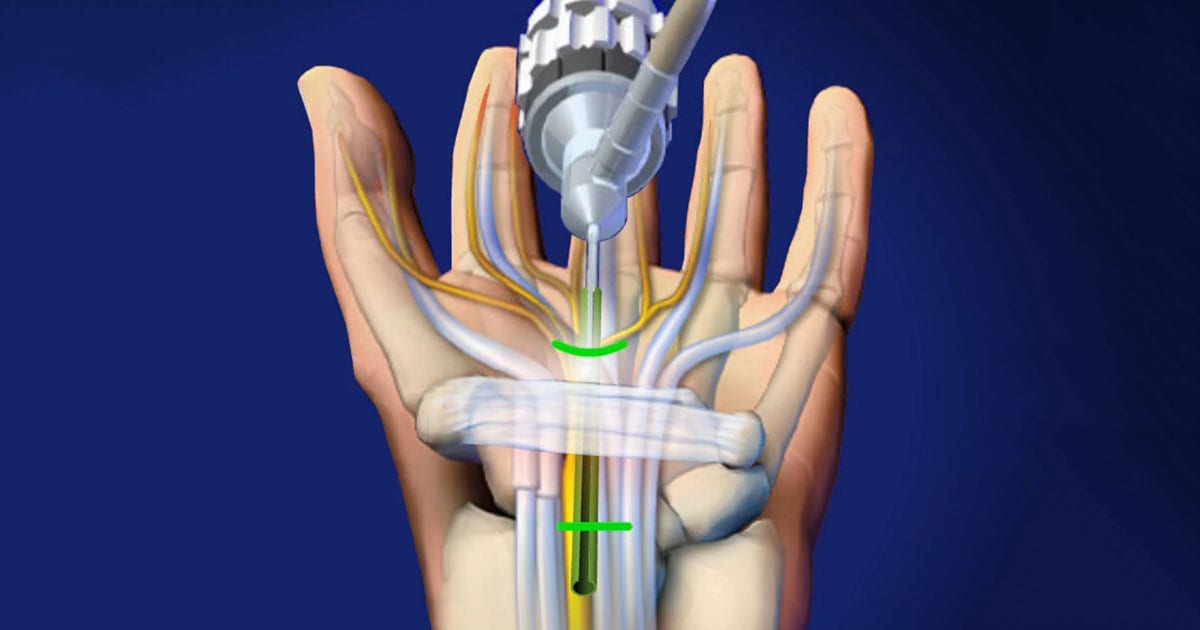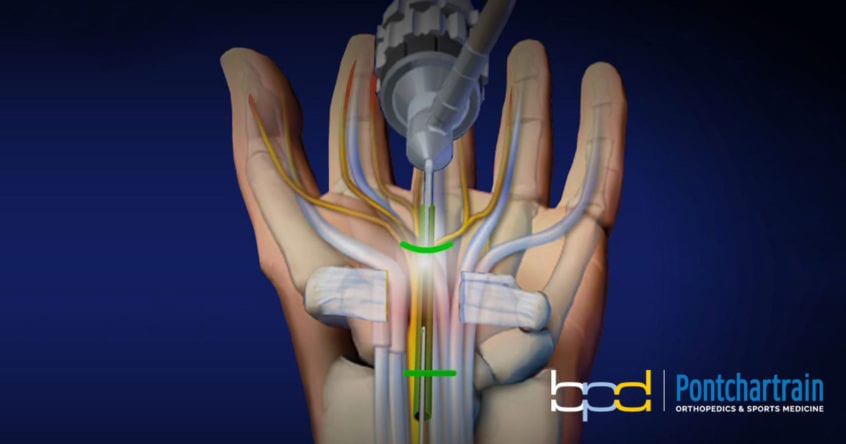Endoscopic Carpal Tunnel Release Surgery

How is Endoscopic Carpal Tunnel Surgery Performed?
In endoscopic surgery, Dr. Donnelly uses an endoscope—a telescope-like tool with a tiny camera attached to it—to both see inside the wrist and to also perform the surgery through a small incision in the wrist. This less invasive procedure allows Dr. Donnelly to work around tissue rather than cutting through it.
The surgery is typically performed under general or local anesthesia and does not require an overnight hospital stay. During the recovery process, the ligament gradually grows back together, but with more room for the nerve. Endoscopic surgery is often preferred to open carpal tunnel surgery because of the faster recovery and less postoperative discomfort than open release surgery.
Why is Carpal Tunnel Syndrome a Common Problem?
When we look at the anatomy of the wrist, the carpal tunnel is a narrow structure at the base of the palm. The tunnel is formed by the bones of the wrist and a strong band of connective tissue - the transverse carpal ligament. This ligament connects the bones to each other where the wrist and palm meet.
Increased pressure in the tunnel affects the function of the median nerve. This is the nerve which passes under the transverse carpal ligament at the wrist to give sensation to the thumb, index, middle, and inner portion of the ring fingers. The tendons that bend the fingers and thumb, called flexor tendons, also travel through the carpal tunnel. With so much function taking place is a very tight space, a combination of factors can result in Carpal Tunnel Syndrome:

